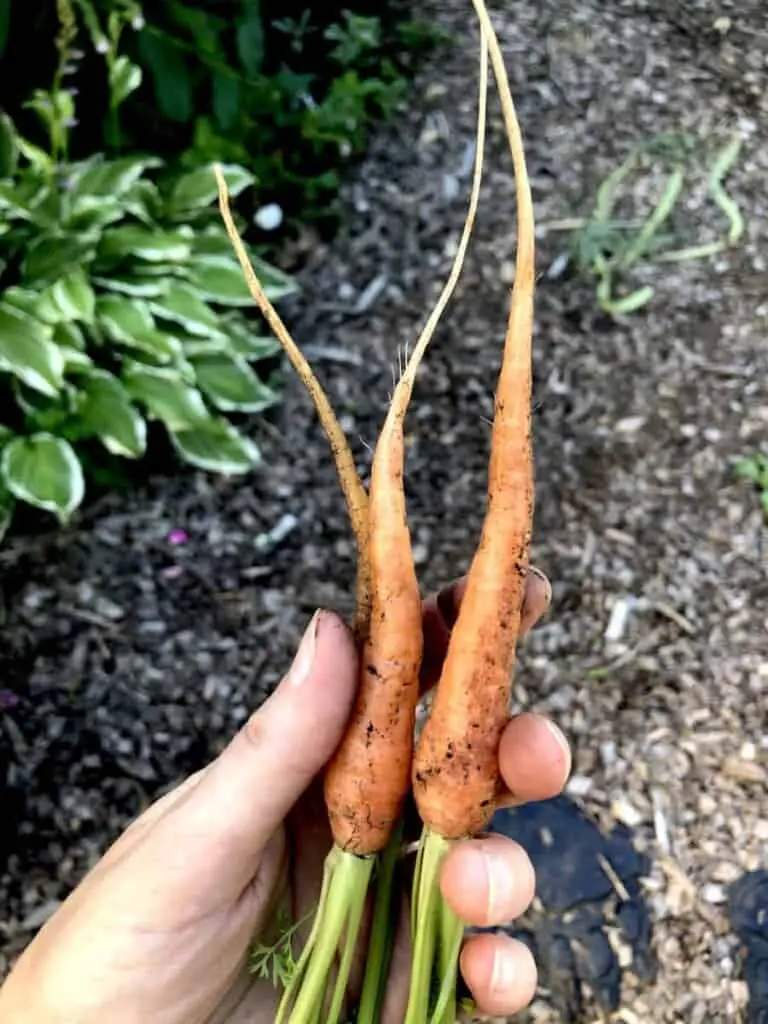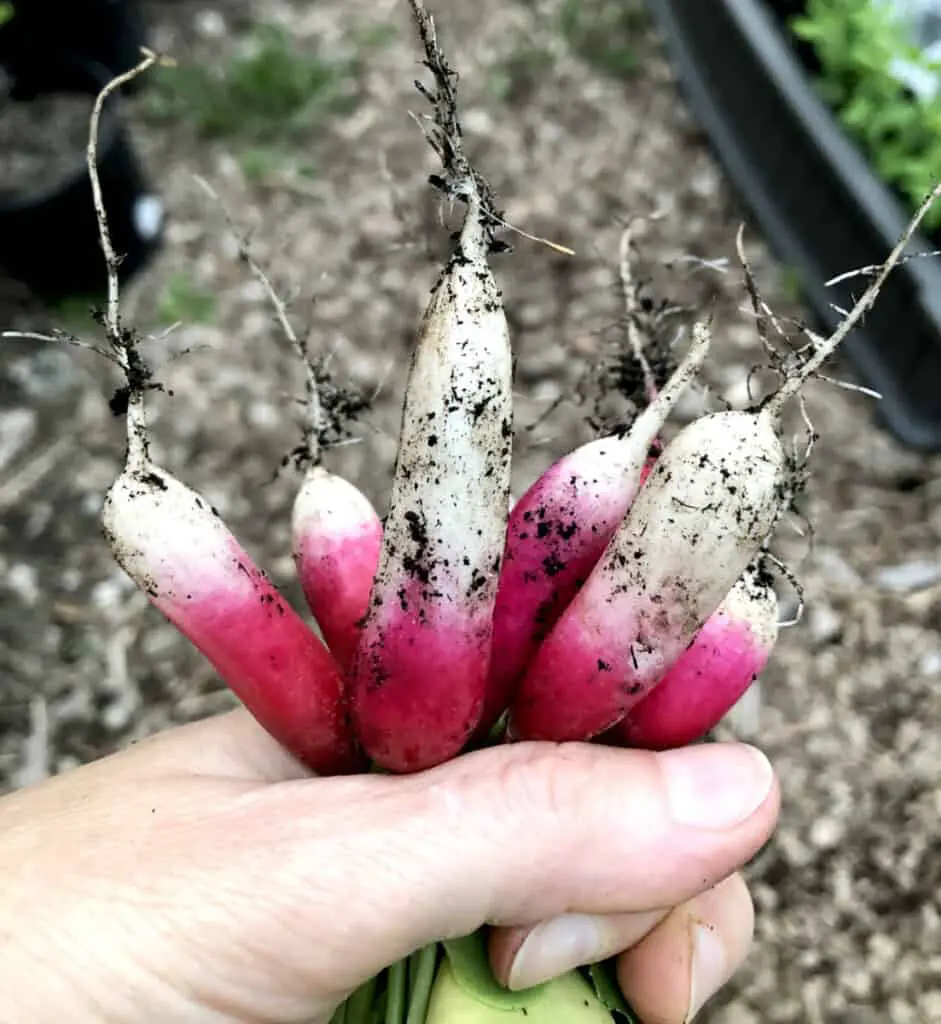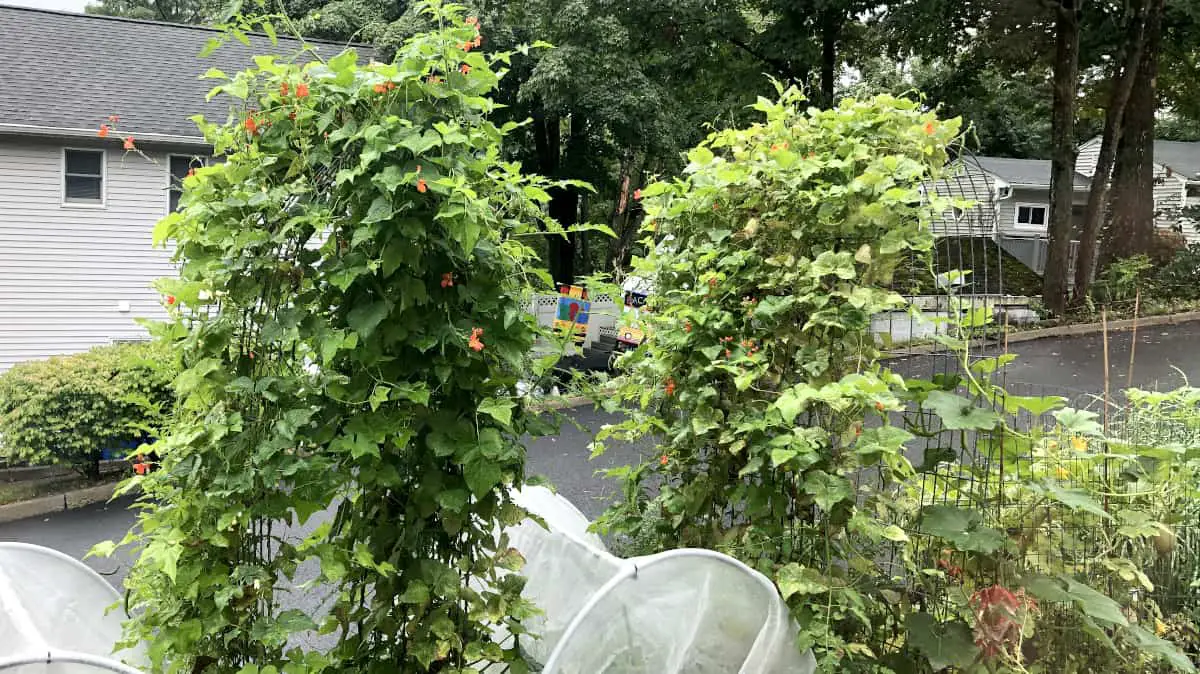Do not let the space dictate what you can and cannot grow. Rather take advantage of vast vegetable varieties to choose from. There is a great edible plant for any space, one just needs to look for it. In this article, I share many varieties that require very little growing space and are perfect for small growing spaces.
Vegetables that need very little space are leafy greens, lettuce, root crop including turnips, carrots, beets, radishes, parsnip, shallots, garlic, green onion, cucumbers, tomatoes, smaller pepper varieties, fingerling potatoes, eggplant, cabbage, and herbs. Basically, you can grow anything you like to eat, and there are three ways to do it. The first option is to find a dwarf cultivar of the vegetable you would like to grow. The second is to plant some vegetables in regular-size cultivars but harvest them as baby vegetables before they reach their full size. The third way to find vegetables that need very little space is to grow the ones that take up very little space but are very prolific. A bonus way to utilize very little growing space is to go vertical.

Very little or small growing space is better than none! Believe me, you can grow a lot of food in a small space by choosing the right vegetables. Let us take a look in detail at what vegetables are most suitable for very small growing spaces.
Dwarf vegetables for very little space
Some of the favorite mini vegetables are patio tomatoes, bush tomatoes, small patio peppers, and bushy hot chili peppers, shorter varieties of cucumbers such as Spacemaster, carrots that are narrow and long for carrots if you can grow them deep, or carrots that are short and fit for containers such as Parisian that is round and can be grown in shallow window boxes. Tom Thumb is a dwarf variety of peas, Tom Thumb lettuce, and green onions that are slender and can fit in narrow spaces.
A dwarf variety of your favorite vegetable might be just what you are looking for when gardening in a very small space. There is a dwarf variety of almost any vegetable you can think of. Dwarf cultivars look just like regular cultivars but are much smaller in size and therefore take up much less space. Most of the dwarf varieties were specially cultivated for patio and container gardens to accommodate small and limited space.
What vegetables can be harvested as baby vegetables
Vegetables that can be harvested prematurely as baby vegetables are potatoes, carrots, radishes, beets, onions, leafy greens, beans, corn, leeks, and summer squash.
The second way to go when planting in very little space is to grow regular-size vegetables but harvest them as baby vegetables. Harvesting vegetables as baby vegetables simply means pulling them out and eating them before they reach their full mature size. Some vegetables like carrots, beets, radishes, onion, baby greens, and baby potatoes actually might taste much better and be sweeter when harvested prematurely.

High-yield vegetables that need very little space
My go-to vegetables that require only very little space but can fill my pantry because they yield so much, are garlic, shallots or onions, carrots, parsnip, leafy greens like Swiss chard, arugula, lettuce mix, radish, beets, beans, and herbs. These I grow in my garden always, and because they do not take much space have the freedom to interplant them with other vegetables to fill the gaps if needed.
Prolific-yielding vegetables that don’t require much space are a must in any garden. In general, they don’t take much space but yield a lot, so you can get the most out of your growing space.
If short on space, you can also utilize the vegetables that have very shallow roots and can do very well in pots, hanging baskets, and window boxes. Vegetables that will do well in such spaces are dwarf carrots and Parisian carrots which are short and don’t require a deep pot. Herbs in general do well in window boxes and are highly decorative as well. Lettuce, spinach, radish, and bush beans have shallow roots and will do well in shallow containers.
When planting in shallow or narrow growing spaces, make sure to check the soil regularly. The soil in such containers can dry much quicker than the soil in garden beds or inground gardens. It is essential to keep in mind that containers need to be fertilized regularly as there is nowhere else plants can pull their nutrition other than from what’s in the container.
Succession planting for small spaces
When dealing with very little grown space, utilize the space by succession planting. Succession planting means that as soon as something is pulled out of the garden it is replaced by other vegetable seedlings as soon as possible. Succession planting will ensure your growing space is always occupied and its potential maximized.
Vertical planting for limited growing space
Another way to extend and maximize very little growing space is to go vertically. Grow vegetables that do not take horizontal space but rather vertically. By going vertical you will have even more choices of what to include in your tiny growing space. Use trellises, hanging baskets, and vertical stackable planters to plant vining plants and plants that are rather tall than wide as they mature.

To learn more about how to maximize your precious garden space, read my article where I talk in detail about How to make the most of veggie garden space.
How close can you plant veggies together?
What is the easiest food crop to grow?
What vegetable can be harvested in one month?
Most high-yielding fruits and vegetables to grow in pantry stocking garden

